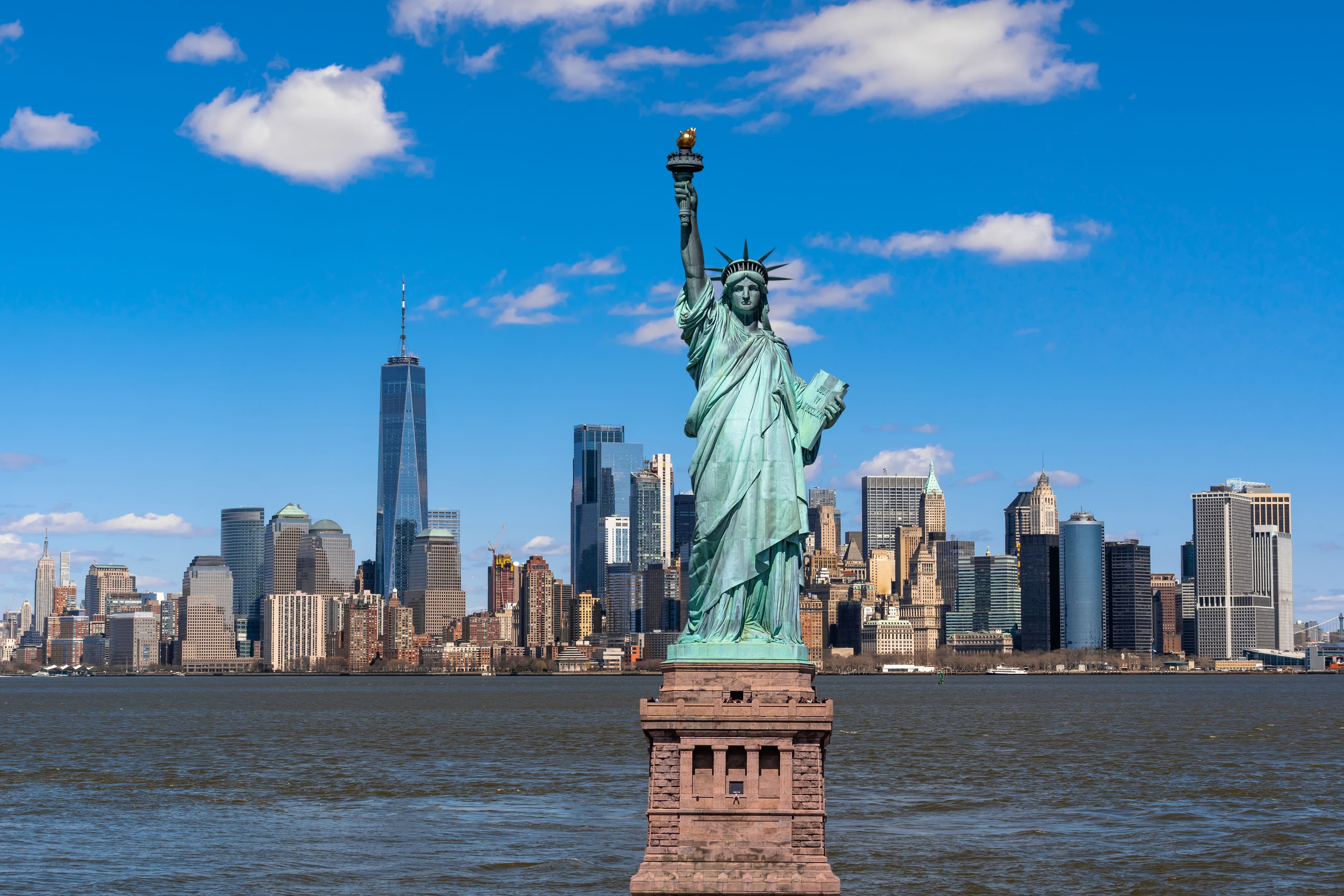

What is the New $250 'Visa Integrity Fee'?
What is the New $250 'Visa Integrity Fee' and What Does it Mean for Tourist, International Students and Workers?

1. Introduction
On July 4, 2025, President Trump signed into law the "One Big Beautiful Bill Act," introducing a sweeping $250 "Visa Integrity Fee" that will fundamentally alter the financial landscape for millions of international visitors to the United States. This new fee applies to "any alien issued a nonimmigrant visa at the time of such issuance," affecting all nonimmigrant visa categories including F-1 and F-2 visas, J-1 and J-2 visas, H-1B and H-4 visas, and tourist B-1/B-2 visas.
The Department of Homeland Security (DHS) announcement has sent ripples through international education circles, multinational corporations, and immigrant communities worldwide. The fee will be at least $250 during the U.S. fiscal year 2025, which runs from Oct. 1, 2024, to Sept. 30, 2025, with the Secretary of Homeland Security authorized to set the fee even higher. This development affects primarily F, M, and J visa holders—encompassing international students, exchange visitors, tourists, and temporary workers—who collectively represent over 10 million annual visa applicants.
2. Background and Policy Context
Timeline and Rationale
The Visa Integrity Fee emerged as part of a broader immigration reform package within the One Big Beautiful Bill Act, signed on Independence Day 2025. A Department of Homeland Security spokesperson stated: "President Trump's One Big Beautiful Bill provides the necessary policies and resources to restore integrity in our nation's immigration system."
However, the law doesn't specify how visa holders may apply for reimbursement of the fee, nor how the fee will be collected. "The visa integrity fee requires cross-agency coordination before implementation," a spokesperson for the Department of Homeland Security told CBS MoneyWatch.
Connection to National Security and Fraud Prevention
The fee is positioned as a mechanism to ensure visa compliance and enhance system integrity. The fee is designed as a security deposit that aims to discourage visa overstays. Those who leave the US within five days of their visa expiration date, or who adjust their status to permanent residency before the visa expires, can apply for a refund of the fee.
Comparison with Previous Visa-Related Fees
This new fee adds to an already complex fee structure. For instance, student visa applicants already must pay an $185 application fee and a $350 fee for the Student and Exchange Visitor Program. The additional $250 fee will bring their total cost to $785. The Machine Readable Visa (MRV) application fee and reciprocity fees remain in place, making this an additional burden rather than a replacement fee.
3. Who Will Be Affected?
Breakdown of Impacted Groups
The fee's reach is extensive, affecting virtually all nonimmigrant visa categories:
- International Students: F-1 and M-1 visa holders pursuing academic and vocational programs
- Exchange Visitors: J-1 visa participants including scholars, au pairs, and researchers
- Temporary Workers: H-1B skilled workers, L-1 intracompany transferees, O-1 extraordinary ability workers
- Business and Tourist Visitors: B-1/B-2 visa holders
Travelers to the United States who are not required to obtain a visa (for example, Visa Waiver Program entrants and most Canadian citizens) would not have to pay the fee since a visa is not being issued.
Impact on Sponsoring Institutions
Universities and research institutions face administrative challenges in advising prospective students about the true cost of U.S. education. Collegepond, with over 22 years of experience in international education consulting, notes that the new fee system places "unprecedented importance on documentation and record-keeping" for institutions helping students navigate compliance requirements.
Implications for Low-Income Applicants
Erik Hansen, US Travel's senior vice president of government relations affairs, stated: "This fee, which will be at least $250 and comes on top of existing visa fees, adds an unnecessary financial barrier for international visitors." The impact is particularly severe for applicants from developing countries where $250 represents a significant portion of monthly income.
4. Financial and Logistical Impact
Total Cost Analysis
The cumulative cost of securing a U.S. visa has reached unprecedented levels:
- Student Visas: Total costs now approach $785 (including $185 application fee, $350 SEVIS fee, and $250 Visa Integrity Fee)
- H-1B Workers: "For example, an H-1B worker already paying a $205 application fee may now expect to pay a total of $455 once this fee is in place," notes Steven A. Brown, a partner at the Houston-based immigration law firm Reddy Neumann Brown PC.
- Additional Fees: The fee must be paid on top of a "Form I-94 fee," which the One Big Beautiful Bill Act increased from $6 to $24.
International Comparison
The U.S. visa costs now far exceed those of competing destinations:
- Canada: The Canadian study permit costs just C$150 (approximately $110 USD)
- United Kingdom: The UK raised its student visa fee from £490 to £524 (approximately $650 USD) in April 2025
- Australia: As of July 1, 2024, international student visa fees increased from 710 to 1,600 Australian dollars ($1,009 USD)
In 2024, the Australian government increased the student visa fee by 125%, making it double the UK fee, four times the USA fee, and nearly 10 times the Canadian fee. However, with the new Visa Integrity Fee, the U.S. has significantly narrowed this gap.
Deterrent Effect and Enrollment Impact
"For affluent travelers, the additional $250 represents a manageable increment relative to overall trip costs," Garcia wrote. "The fee structure appears strategically designed to enhance compliance rather than broadly restrict travel." However, for budget-conscious students and travelers, the cumulative fees may prove prohibitive.
5. Criticisms and Controversies
University and Advocacy Group Responses
Educational institutions have expressed concern about the fee's impact on international enrollment. NAFSA (Association of International Educators) notes that the fee "will be paid in addition to the 'machine readable visa' (MRV) visa application fee and any reciprocity fees that nonimmigrant visa applicants must already pay."
The American Immigration Council, a nonpartisan think tank focused on immigration issues, warned that "These fees, many of which are authorized to be layered on top of existing fees, are largely mandatory, effectively putting legal pathways out of reach."
Fairness and Accessibility Concerns
Critics argue the fee disproportionately affects students and workers from developing nations. Hansen emphasized: "Among the top deterrents to visiting the U.S. are cost and visa wait times. And the new visa integrity fee increases the upfront costs of visiting the U.S. 144%, while doing nothing to lower interview wait times."
Impact on U.S. Soft Power
The fee raises questions about America's commitment to educational diplomacy and cultural exchange. Critics argue that these policies have made it more difficult for people from certain countries to visit the US, especially those seeking education or professional opportunities.
6. Government Justification and Support
Official Reasoning
A Department of Homeland Security spokesperson explained: "President Trump's One Big Beautiful Bill provides the necessary policies and resources to restore integrity in our nation's immigration system."
The government cites compliance statistics to justify the measure. Data shows most visa holders comply with their visa terms. For the fiscal years between 2016 and 2022, between 1%-2% of nonimmigrant visitors overstayed their visas in the United States. However, an estimated 42% of the approximately 11 million unauthorized population living in the United States entered the country legally, but overstayed their period of admission.
Revenue Generation and Fund Usage
The Congressional Budget Office estimates that the Department of State will issue about 120 million nonimmigrant visas over the 2025-2034 period. CBO estimates that enacting the provision would increase revenues and decrease the deficit by $28.9 billion over the 2025‑2034 period.
Fee revenue will be deposited into the U.S. Treasury's general fund. The legislation does not earmark these funds for specific immigration-related improvements, raising questions about whether the fee will enhance visa processing efficiency.
7. Broader Implications
Signal of Immigration Policy Direction
The Visa Integrity Fee represents part of a broader tightening of immigration policies. The One Big Beautiful Bill Act includes multiple fee increases:
- Asylum Application fee of $100 with an additional $100 fee imposed for every year the application remains pending
- The fee for the Electronic System for Travel Authorization (ESTA) will increase from $4 to $13
- Parole Application fee of $1000
Impact on Higher Education
International students contribute significantly to U.S. higher education, both financially and intellectually. The fee increase may accelerate the trend of students choosing alternative destinations. In 2024, 52% of Canadian study permit applications were refused, up from 38% in 2023, while in the US, study visa refusals reached a record high in 2023, with 36% of F-1 applications denied.
Economic Consequences
Immigration attorney Steven A. Brown notes the particular impact on employers: "Until those procedures are announced, employers and foreign nationals should treat the $250 Visa Integrity Fee as a non-refundable upfront cost and plan accordingly."
The tech sector, which relies heavily on H-1B workers, faces increased costs for bringing in international talent. Small startups may find the cumulative visa costs prohibitive when competing for global talent.
8. Alternatives and Future Outlook
Legal Challenges
While no formal legal challenges have been announced, immigration advocacy groups are monitoring implementation closely. The fee's mandatory nature and lack of waiver provisions may face scrutiny.
Institutional Responses
Educational consultancies like Collegepond are developing comprehensive support systems to help students navigate the new landscape, including "detailed guidance on compliance requirements" and "comprehensive record-keeping systems from the beginning of their journey."
Some universities may consider subsidizing the fee for exceptional students, though budget constraints limit this option. Corporate sponsors of H-1B workers will likely absorb the costs, but smaller employers may struggle.
Future Policy Predictions
The fee will be adjusted annually for inflation starting in FY 2026 with reference to the Consumer Price Index. This automatic adjustment mechanism ensures the fee's real value remains constant, potentially reaching $300-350 within five years.
The refund mechanism remains the most uncertain aspect. CBO expects that the Department of State would need several years to implement a process for providing reimbursements. Immigration attorney Brown advises clients to treat the fee as nonrefundable: "If you get it back, great. But it is usually difficult to get money back from the government."
9. Conclusion
The $250 Visa Integrity Fee represents a significant shift in U.S. immigration policy, adding substantial financial barriers to an already complex and expensive visa process. While positioned as a mechanism to ensure compliance and restore integrity to the immigration system, the fee's practical impact extends far beyond its stated purpose.
For international students, the cumulative cost of U.S. education—already among the world's highest—has increased dramatically. Combined with existing fees, students now face nearly $800 in visa-related costs before even setting foot on campus. Similarly, skilled workers and their employers must factor in these additional expenses when considering U.S. opportunities.
The fee's revenue-generating potential—projected at $28.9 billion over a decade—underscores its fiscal motivation. Yet questions remain about implementation, particularly the promised refund mechanism that even government analysts expect will benefit few applicants.
As global competition for talent intensifies, the Visa Integrity Fee may prove counterproductive to U.S. interests. While the immediate fiscal benefits are clear, the long-term costs—in reduced international enrollment, diminished cultural exchange, and weakened competitiveness for global talent—may ultimately outweigh the revenue gains.
The coming months will reveal whether this fee achieves its stated goal of enhancing immigration system integrity or merely serves as another barrier to the American dream. What remains certain is that for millions of prospective visitors, students, and workers worldwide, the cost of accessing U.S. opportunities has grown significantly steeper.
